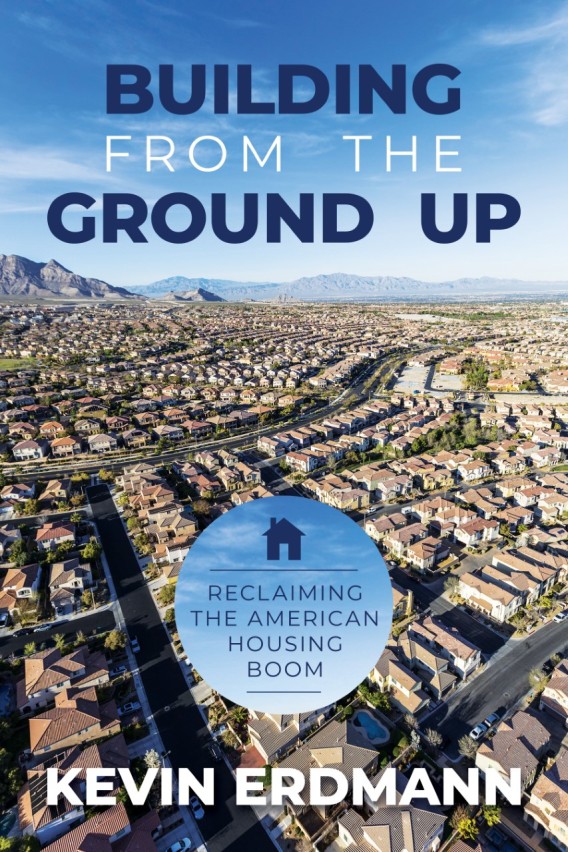
In Building from the Ground Up: Reclaiming the American Housing Boom, Kevin Erdmann documents how an inappropriate fear of excessive homebuilding led to a self-fulfilling prophecy of recession and financial crisis, which continues to inflate the cost of living and limit economic potential for American families today.
Most debates about the crisis accept that the US had engaged in an unsustainable building boom, and disagreements focus on the causes of those excesses – a credit boom, speculation, federal subsidies or monetary stimulus, etc. In his first book, Shut Out, Erdmann detailed evidence that the country had needed a significant building boom, and yet a quite moderate boom was associated with a number of economic predicaments. The reason we needed a building boom was that key American metropolitan areas – coined the Closed Access cities – have developed such oppressive local regulations over land use that they had lost the ability to grow and to welcome new residents. The cities that had become notoriously expensive – primarily New York City, Los Angeles, Boston, and the San Francisco area – had one embarrassing trait in common: they permitted a lower rate of new home building than any other major metropolitan area.
Because homebuilding was so limited in those cities, a mass migration event developed of families piling out of those cities, moving to other nearby metropolitan areas in search of an affordable cost of living. The cities that took in those new residents – coined the Contagion cities – became the poster children of overbuilding and excess. To the contrary, they were building many homes because they were being flooded by families who could find no affordable homes in the Closed Access cities. When those cities were left with empty streets full of homes after the financial crisis, it was not because they had overbuilt. It was because the recession and the financial crisis put a sudden stop to the migration event that had necessitated the building.
In Building from the Ground Up, Erdmann reviews the sequence of developments that led from boom to bust and to the slow recovery that then continued until the Covid-19 pandemic.
Demand During the Boom
- The Federally sponsored conduits for mortgage lending – FHA, Fannie Mae, and Freddie Mac – largely sat out the boom years of 2003-2006, in part because of accounting scandals at Fannie & Freddie.
- The privately securitized mortgage providers that expanded their market share did not fuel an irrational, haphazard building boom. Prices increased and construction happened where homes were most needed.
- There is little reason to blame the housing boom on loose monetary policy or excessive stimulus.
From Soft Landing to Suicide Pact
- Households were becoming nervous about homeownership well before the official start of the recession in 2007.
- The Federal Reserve guided the market to a “soft landing” by 2007. 2008 should have been a year of recovery, but by the time the soft landing came, the Fed became convinced of the myth of housing oversupply and ignored stark evidence of a coming crisis.
- The Contagion cities especially needed economic stimulus by 2007. Their foreclosures and vacancies that followed were caused by an unchecked economic collapse, not a building boom.
Marching Hand in Hand to Crisis
- The booming Collateralized Debt Obligation (CDO) market, which consisted of increasingly complex bundles of financial securities created from pools of mortgages, was an early symptom of financial anxiety, which mostly developed after the housing boom. Treating it as part of a lending bubble led to panic.
- Critics have chastened the government for bailing out financial firms that had become “too big to fail”, but the mistake was not in saving those firms, it was in failing to stop the panics that bankrupted so many smaller firms.
- Most of the mortgage defaults that are associated with the end of the housing bubble were the result of the wider recession, not the cause of it.
Adding Insult to Injury
- In late 2008, the Federal Reserve took unusual measures, including paying banks to hold onto cash rather than lending it out, because they feared inflation. The economy, however, was in the midst of a deflationary bust.
- When the Federal Reserve did finally pursue monetary policy that supported general economic stability, the federal government, through its new control of Fannie Mae and Freddie Mac, and through the implementation of new regulations pertaining to mortgage lending, wrecked housing markets where home buyers are credit-constrained and homes had been affordable.
- In most places, home prices in the most affordable neighborhoods had not risen unusually during the boom, but did decline sharply after 2008 because mortgage lending was largely shut off.
Where Do We Go from Here?
- There is a great deal of potential for equitable economic growth. Local land use regulations in major cities and new regulations against reasonable mortgage lending are preventing Americans from living where they would choose to live. These regulations raise rental costs and block the growth of millions of construction jobs.
- Generous lending oversight, stable income growth, equitable taxes on housing, and deregulated urban land use can all be a part of an economic renaissance, but in order to accomplish these goals, Americans must unlearn the wrong lessons from the Great Recession. We must unshackle housing markets.
Building from the Ground Up expands on the details of all of these facets of one of the most important economic developments of our lifetimes.

